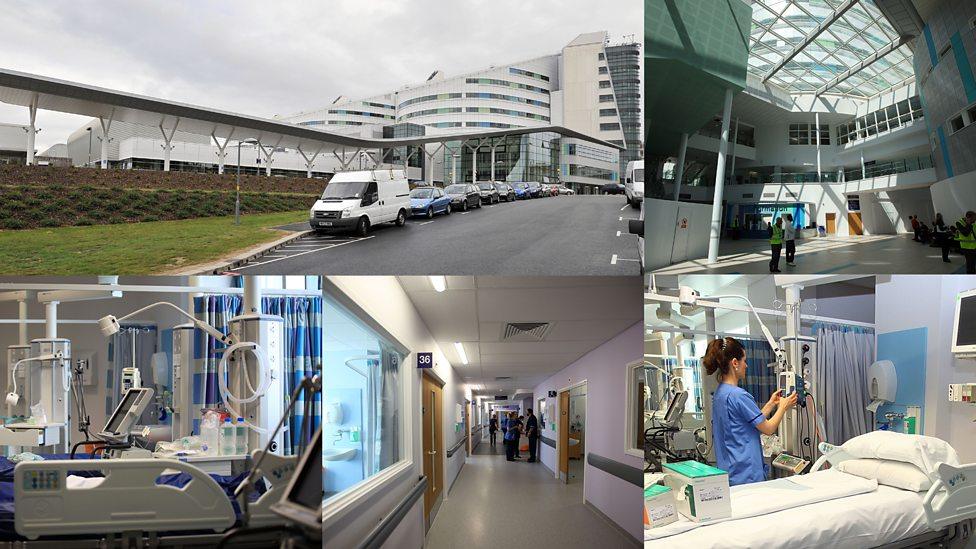A day in the life of a hospital
- Published
- comments

Queen Elizabeth Hospital Birmingham is the biggest single-site teaching hospital in Europe.
About 2,000 outpatients come through the doors every day, and this year it will see more than one million patients in total.
Queen Elizabeth Hospital Birmingham can certainly reel off the statistics to demonstrate its importance to the West Midlands healthcare economy and the NHS as a whole.
My day here with the 91╚╚▒Č Radio 5 live team during the network's 24-hour broadcast has provided a prism for looking at the challenges facing the health service.
Patient demand is an obvious one.
That expected figure of a million patients seen across the trust this year compares with 650,000 in 2010, the year the hospital opened.
That was when services at two hospitals were transferred to a single site in the newly constructed building.
The pressures on accident and emergency are all too clear.
Rising numbers coming through the doors, including some from well beyond Birmingham, have made it hard to hit national benchmarks.
The proportion treated or assessed within four hours is running at about 92%, below the 95% target but in line with the average for hospitals across England.
Emergency admissions are up 16% this month compared with January 2015.
The increase over that period for the over-65s is even steeper, at 23%.
Money challenges
Managing the finances has become progressively harder.
The trust recorded annual surpluses until this financial year, when it expects to make a deficit in the order of £23m.
Keeping a lid on spending on agency staff is a big challenge for many hospitals, but less so for Queen Elizabeth.
Management say recruitment has not been easy while acknowledging a major city teaching hospital will generally find it easier than others to attract staff.
The hospital was built under the private finance initiative, similar to a mortgage. But bosses say PFI hasn't caused financial headaches.
Waits
Queen Elizabeth Hospital is doing what it can to reduce delayed discharges.
The Harborne ward is set aside for elderly patients medically ready to return home but awaiting social-care arrangements to be put in place.
The idea is to make it feel like a nursing home rather than a conventional medical ward so occupants don't get used to being "hospitalised".
Even so, this week about 50 beds elsewhere in the hospital have been "blocked", about 3% of the total.
The trust chief executive, Dame Julie Moore, is one of the leading NHS executives in England.
She has been in the post for 10 years and oversaw the creation of the new hospital.
She believes that despite all the pressures, things are "just about under control".
But on the bigger agenda of health and social care integration, "systems should be joined up".
When it comes to weekend services, Dame Julie believes she can deliver the appropriate level of care and doctor staffing levels within the existing contract arrangements.
Much of the debate about the "seven-day NHS" has revolved around the need for doctors' contract reform.
But Dame Julie says through local agreements, the correct number of junior doctors and consultants are currently on duty at weekends.
As the hustle and bustle of daily life at this hospital continues, the chief executive makes a plea for the NHS to be talked up as a "great place to work".
Dame Julie told 91╚╚▒Č Radio 5 live there was every reason to be positive about "one of our best national assets, which makes Britain what it is".